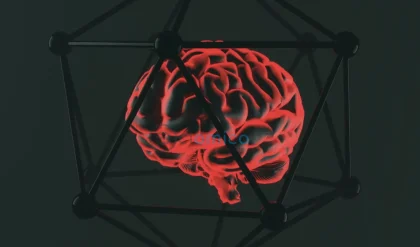![]()
In a groundbreaking development in semiconductor technology, researchers at Penn State have successfully created a functioning computer using only two-dimensional (2D) materials, a significant departure from the decades-long dominance of silicon in the field. Published in the journal Nature, this innovation marks a pivotal moment for the future of electronics, with the potential to lead to thinner, faster, and more energy-efficient devices.
The research team, led by Saptarshi Das, an engineering professor at Penn State, utilized molybdenum disulfide and tungsten diselenide—two different types of 2D materials—to construct a complementary metal-oxide semiconductor (CMOS) computer. This type of technology is foundational to nearly all modern electronic devices, and the researchers’ work is the first instance of a complete CMOS computer being developed without silicon. Molybdenum disulfide was used for n-type transistors, while tungsten diselenide served as the p-type transistors.
Das highlighted the significance of this achievement, stating that while silicon has driven remarkable advancements in electronics for decades, its performance degrades as devices become smaller. In contrast, 2D materials maintain their exceptional electronic properties even at atomic thickness, offering a promising alternative for future technology.
The integration of both n-type and p-type semiconductors is crucial for achieving high performance at low power consumption, a complex challenge in moving beyond silicon technologies. Despite previous progress in creating simple circuits with 2D materials, scaling to complex, fully functional computers had remained elusive until now.
The team employed metal-organic chemical vapor deposition (MOCVD) to create large sheets of molybdenum disulfide and tungsten diselenide, successfully fabricating over 1,000 transistors of each type. By meticulously tuning the device fabrication process and post-processing steps, the researchers were able to create fully functional CMOS logic circuits.
According to Subir Ghosh, a doctoral student and the first author of the study, the new 2D CMOS computer operates at low supply voltages, achieving energy-efficient performance while being capable of executing simple logic operations at frequencies of up to 25 kilohertz. While this frequency is slower compared to conventional silicon-based CMOS circuits, Ghosh emphasized that this prototype, known as a one instruction set computer, represents a significant step forward.
Additionally, the team developed a computational model to predict the performance of their 2D CMOS technology, benchmarked against state-of-the-art silicon equivalents. Both Ghosh and Das acknowledged that while there’s room for optimization, this research signifies an important milestone in leveraging 2D materials to push the boundaries of electronic capabilities.
Looking ahead, Das noted that while the technology is still in its infancy—having developed rapidly since 2010—there is potential for significant advancements in 2D material computers that could eventually rival or surpass traditional silicon technology.
The research was made possible with support from the 2D Crystal Consortium Materials Innovation Platform at Penn State, as well as funding from various U.S. governmental research organizations. The collaborative effort also included numerous contributors from the Penn State community and international collaborators, underlining the importance of teamwork in pursuing such innovative research.
Reference:
- Subir Ghosh, Yikai Zheng, Musaib Rafiq, Harikrishnan Ravichandran, Yongwen Sun, Chen Chen, Mrinmoy Goswami, Najam U Sakib, Muhtasim Ul Karim Sadaf, Andrew Pannone, Samriddha Ray, Joan M. Redwing, Yang Yang, Shubham Sahay, Saptarshi Das. A complementary two-dimensional material-based one instruction set computer. Nature, 2025; 642 (8067): 327 DOI: 10.1038/s41586-025-08963-7






